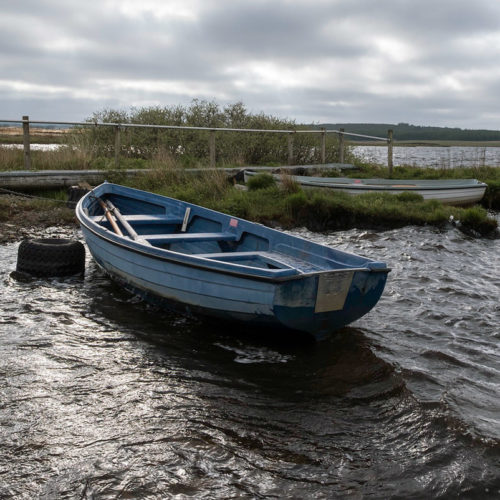Season
15th March - 6th October
 Image courtesy of North Light
Image courtesy of North LightLoch Calder is the largest and the deepest loch in Caithness with a varied landscape and shallow bays. On Calder, the most obliging trout seem to be in the ½ to ¾ lbs range, although much larger fish of up to 6lbs have taken the fly. Along with brown trout, this loch is home to Arctic char and ferox trout but these are rarely caught on the fly. This one is definitely worth a cast!
Additional information
- 10" minimum
- Boats are berthed at the South end on both sides
- Please use the special car parks provided
- No cars may be taken into the fields
- Use styles or gates for access
- No dogs allowed, livestock and wildlife must not be disturbed
- No camping or picnics
Map and locations
Touch here to open the starting point on your mobile device's mapping app.
History of the loch
By Gordon DouglasThe biggest loch in Caithness and, being the source of the county’s water supply, is subject to a wide variation in level. In the late sixties two dams were built and the water level gradually rose creating a bay, known now as the “new bay” at the south end. At the north end an island was submerged which had been a favourite fishing area. Opposite the wooded land on the east bank there is a deep area which is said to hold very big trout and is also home of char which appear, and are sometimes taken, as they venture into shallower water to spawn, Prior to the raising of the water level , the south end of the loch was comparatively shallow and legend has it that it could be crossed by horse and cart, but in recent years most of the angling activity has taken place in this area. In the sixties the north end was well fished with the boats being berthed in a natural bay close to ancient Pictish dwellings. It was an easy walk from the road down to the berth but some effort was required to climb the slope back up to the road at the end of the day. When an outboard motor became an essential in the angler’s kit, the slope became a mountain and the berth became less and less used until eventually all boats were moved to the south end. The berth at this end was originally at the mouth of the deep burn which runs down from the Brawlbin area. A handy corrugated hut stood close by in which many an hour was spent by diehards waiting for the wind to drop off a bit. The hut was dismantled after being badly wind damaged and, about the same time, the Association boats were moved to the other side of the loch when the ownership of the farm on that side changed hands, the new owner having expressed keen interest in the formation of a Loch Calder Association. The berth was on a sandy beach and suffered the effects of changes in water level so once again the berth was moved, this time to the end of the old road leading to Dorrery and now partly submerged. An extensive water supply scheme is now under construction by which the whole of Caithness and the north coast, as far as Tongue, is linked and supplied from Loch Calder. The effect on the loch when the scheme is in operation, will be watched with interest. Calder is a fine loch holding an extensive stock of very fine trout. Many other waters have been restocked with fish originating from this loch.


